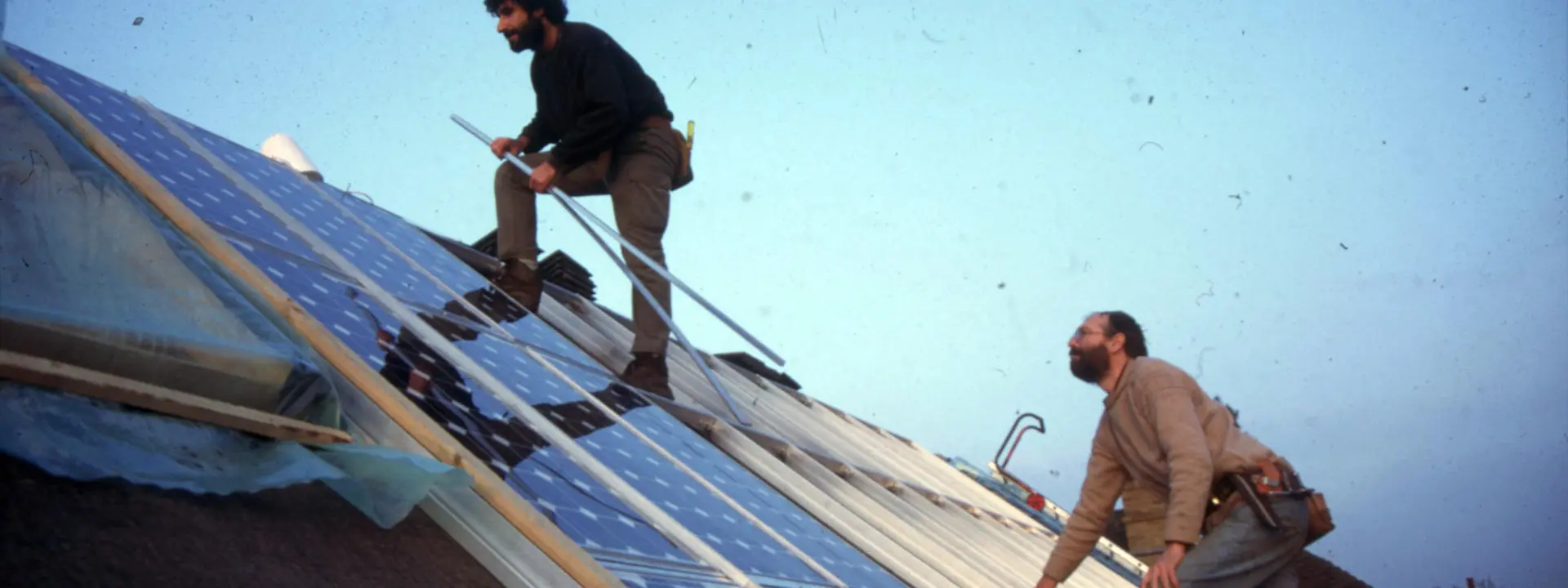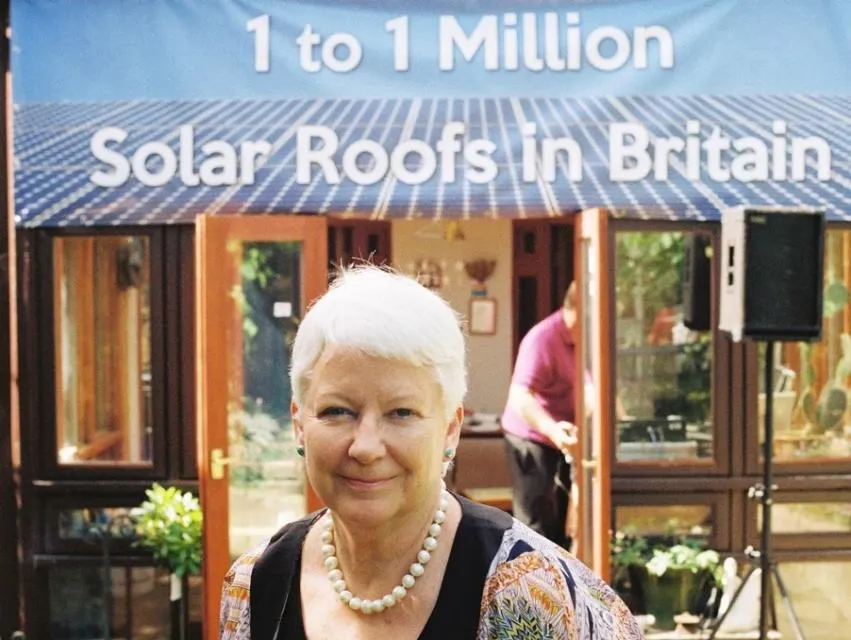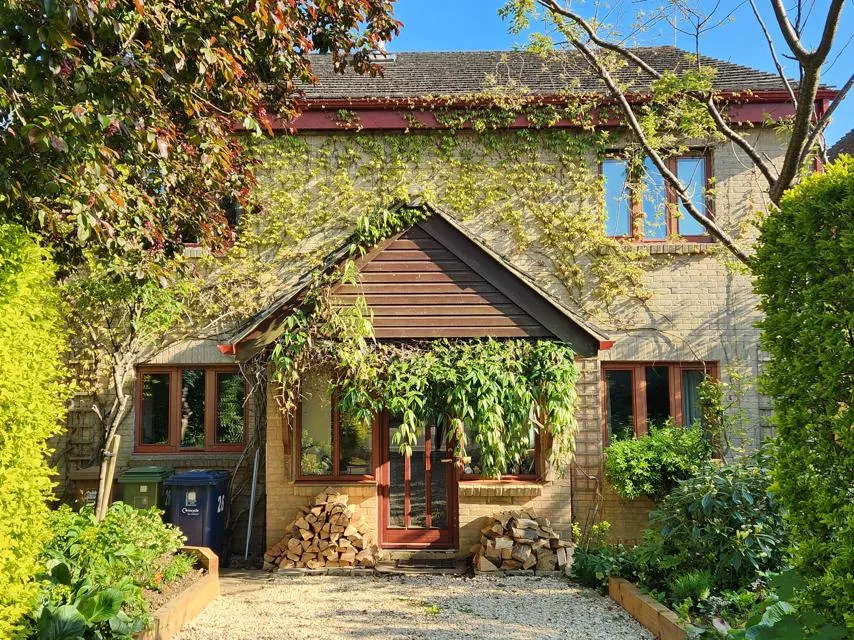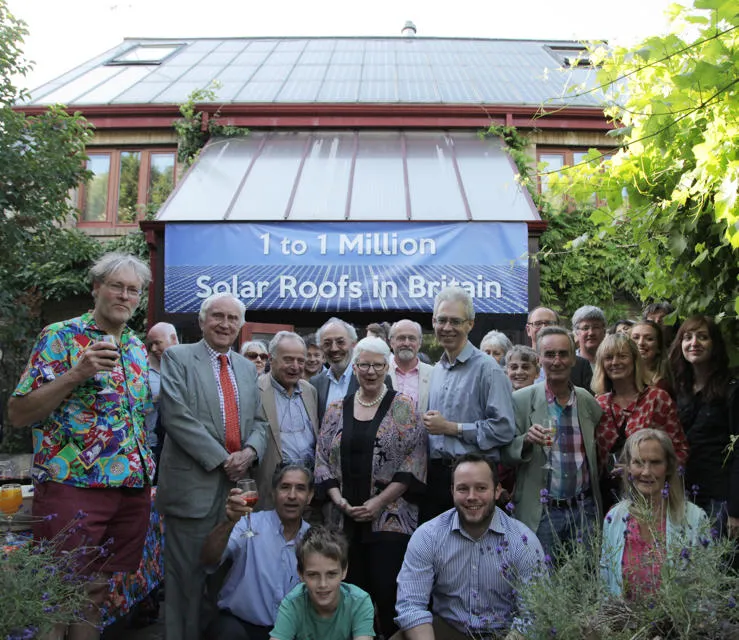The quiet revolution that began in an Oxford home

The year 1995 was pivotal for the tech sector. The Sony PlayStation made its debut in the UK and Windows 95 was revolutionising home computing. But beyond the headlines, something quietly groundbreaking was happening in a suburb of north Oxford. A modest home was about to become the first in the country to be built with a solar roof, making history in its own right.
Different to individual panels, a solar roof replaces the traditional build materials of slate and tiles with a solar array of multiple panels integrated into the frame of a south facing roof.
At Heriot-Watt, we remain at the forefront of the science underpinning solar panels, driving research to enhance their efficiency, adaptability, and integration into the built environment.
The Oxford Ecohouse, as it became known, was designed by Sue Roaf, Professor Emeritus at Heriot-Watt University and an architect, academic, and author, known for her pioneering work in sustainable and resilient architecture.
The six-bedroom family home produces around 130 kg CO2/annum per metre square, in contrast a comparable UK house produces around 5000 kg CO2/annum per metre square.
The award-winning house has featured in numerous architecture and renewable energy books as well as TV news and topical programmes. It has even appeared on Blue Peter, alongside ‘Hannibal’ an early electric car belonging to Professor Roaf that was charged from the solar roof making it the first solar powered car in the UK.
It is exactly 30-years since this innovative project got off the ground and to mark the occasion, Professor Roaf is hosting a party at the property with key pioneers and figures from Britain’s solar power community as well as politicians, prominent scientists specialising in solar power conversion, designers and the public.

Recalling on the early stages of the UK’s first solar roof, Professor Roaf said: “The aim of the Oxford Ecohouse was to show the world that people could live comfortable lives run on free, clean, affordable solar energy. It worked. It was a Zeitgeist thing. Climate Change was hitting the news in the 1990s and here was a solution – hope.
“It was a huge step forward but why, when in Germany they already had nearly 5000 solar roofs by 1995, did the UK Government leave it to a single mother with two kids to pioneer this technology?
“It's because some research scientists and anybody with vested interests in not going solar persuaded the government that there was not enough sunshine in Britain to make it cost effective. It was expensive then.
“Unlike today when energy companies are promoting solar, the electricity industry was at first reluctant to connect to a solar roof. I rang my supplier to tell them how lucky they were that together we would connect first roof top solar system in the UK. The man at the end of the phone told me where to get off to in no uncertain terms. I wrote to his Managing Director and explained the situation and the next day I was rung by a senior engineer who drew-up a bespoke connection agreement for small scale domestic solar system. I was thrilled.”
The idea for a solar roof first took hold while Professor Roaf was in Glasgow attending the North Sun conference in 1992. After a ‘pub crawl’ stretching the length of Sauchiehall Street with friends and colleagues including George Goudsmit, Managing Director of AES Solar, a design had morphed from a few panels to an entire multi-functional solar roof.

That first solar roof cost Professor Roaf £28,000 to build and accommodated a 4kWp of Photovoltaics and 5m2 of solar hot water panels. It was made possible at the time through the support of AES Solar, friends and other solar pioneers but, as with all new technology, there were many hurdles to overcome.
Since then, solar technology has rapidly grown in popularity with solar panels fitted to more than 1.5m properties across the county.
“At the time, everything was a problem and was doubly expensive because it was the UK’s first integrated solar roof,” she said.
“There were no planning regulations that addressed solar roofs, so I had to prove the colour and weight of the materials and the durability of the roof. Then there were the fire regulations and the aesthetic impact on the area. These were just some of the challenges we had to overcome.”
While Professor Roaf still relies on her energy provider to help heat and power her home in the depths of winter, the solar roof provides power for electricity and heats a 300-litre water tank year-round. This means her monthly heating bills are around £40 - £50 including standing charges.
Earlier this year, the UK Government announced that, by 2027, almost all new-build homes in England will be legally required to have solar panels installed on their roofs highlighting the ongoing and significant role of the technology in the drive towards net zero.
Professor Roaf adds: “A further incentive is now that the UK's Future Homes Standard (FHS) will be fully implemented in 2025 to reduce carbon emissions from new homes by 75-80% compared to current building regulations. The UK Government has finally done the math and realised that THE most effective way to slash emissions from a home is not with a heat pump, or a heat recovery system, but by putting a solar system on its roof.”

Professor Roaf's pioneering approach to solar panels aligns with the cutting-edge research at Heriot-Watt University, which is driving advancements in energy systems, solar panel technology, the integration of solar heat into new and old buildings and supports the global push toward achieving Net Zero.
One of those at the forefront of this work is the University’s Chief Scientist, Professor Tadhg O'Donovan, an expert in solar panels at Heriot-Watt's School of Engineering and Physical Sciences based in Dubai.
He said: “As we mark this incredible milestone in solar energy innovation, Heriot-Watt University is proud to recognise the pioneering spirit of Professor Sue Roaf and the advancements she has championed. Her work exemplifies the transformative potential of solar technology to revolutionise our approach to energy.
“At Heriot-Watt, we remain at the forefront of the science underpinning solar panels, driving research to enhance their efficiency, adaptability, and integration into the built environment. This commitment is part of our broader mission to address the global energy challenge and support the transition to a net-zero future.
“Professor Roaf's ground-breaking efforts remind us that innovation thrives when passion and purpose converge. At Heriot-Watt, we are inspired to continue building on this legacy—harnessing the power of the sun to create a more sustainable and resilient world.”
Heriot-Watt is committed to mobilising collective efforts towards a net-zero future.
Operating at the forefront of this effort is iNetZ+, a global centre of excellence and Institute for research, innovation and teaching in its field. The institute works closely with industrial partners, governments, and local communities to address global sustainability challenges.
Professor Roaf concluded: “I follow in my father’s footsteps as an innovator. My father, John Ross, was a graduate engineer from Heriot-Watt University who went to Malaya as a state engineer after WW2 and experimented with various forms of novel structural concrete there.
“It is such an honour to be part of the Heriot-Watt pioneering spirit that 200 years ago helped start adult education movement through the Mechanics Institutes to train the engineers who built the industrial revolution and the infrastructures of the Empire and is now focussed on building a safer world powered by clean renewable energy.”
More information on Heriot-Watt’s commitment and strategy towards net zero can be found on the website.